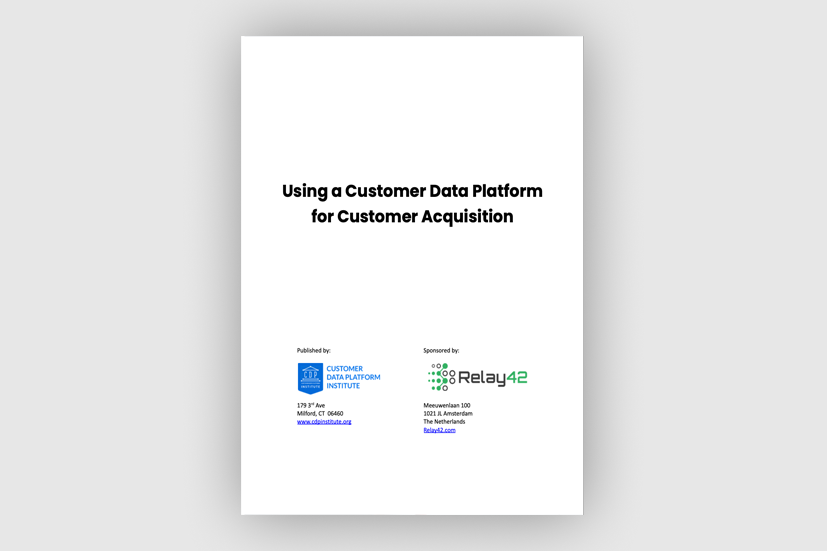How to Calculate Customer Lifetime Value (CLV) for B2C Brands (2025)
by Melis Karabulut on 31.1.2025

For any business, it is more expensive to acquire new customers than to sell to existing customers.
Calculating Customer Lifetime Value can be one of the most important metrics for any business to make better investments in their sales and marketing strategies. Depending where you look, you’ll see Customer Lifetime Value abbreviated into an acronym that could be CLV, CLTV, or LTV. For today’s article we’ll go with CLV. For specific differences between CLV or LTV check the FAQ section at the end of this article.
CLV is a strategic lens through which B2C brands can assess their customer relationships. It helps businesses increase revenue by acquiring new customers that have the potential for high CLV as well as developing ways to grow existing customers. Especially for industries like retail, e-commerce, and subscription-based services, CLV serves as a guiding principle to make these informed decisions on marketing budgets, audience segmentation and resource allocation.
Continue reading or go straight into:
- What is Customer Lifetime Value (CLV)?
- Why Customer Lifetime Value Matters for B2C Brands
- How to Calculate Customer Lifetime Value - Step by Step Guide
- How to Improve Customer Lifetime Value in B2C - Strategies and Examples
- FAQ
1. What is Customer Lifetime Value (CLV)?
Customer Lifetime Value (CLV) is the total revenue a business makes from a customer throughout their relationship. It’s a measure that changes the focus from single transactions to the long-term profit from customer relationships.
In a B2C context, purchase frequencies and customer behavior can vary a lot. Understanding CLV helps identify which customer segments to focus on. It also shows how to use resources effectively.
For example, an e-commerce brand selling skincare products might find that a loyal customer who spends $60 per order, purchases quarterly, and remains active for five years contributes $1,200 in revenue over their lifetime.
Further analysis and segmentation can then be applied to get insights into the reasons why some customers achieve or surpass the $1,200 AVG while others don’t. That could be related to the time of purchase, their age, the type of product they first bought from you, or other factors that could aid future decisions.
2. Why Customer Lifetime Value Matters for B2C Brands
Understanding CLV is crucial for B2C brands because it provides insights into customer behavior and preferences, a chance to further tailor their marketing strategies, attract and retain high-value customers.
For instance, if a brand identifies that a specific segment of customers consistently spends more and engages with the brand frequently, they can create targeted promotions or loyalty programs to enhance customer satisfaction and encourage repeat purchases from other customers or prospects that behave in the same way.
Moreover, CLV helps in budgeting and resource allocation. With that, brands can better determine how much they should invest in acquiring new customers versus retaining existing ones. If the data shows that retaining a loyal customer is more cost-effective than acquiring a new one, businesses can more confidently shift their focus to improving customer service and shopping experience, or offering personalized cross-sell and up-sell recommendations.
Additionally, understanding predicted CLV allows brands to forecast future revenue more accurately. Knowing the potential value of a customer or prospect allows marketers and analysts to make more informed decisions about segmentation, channels and messaging.
We can summarize the benefits of measuring CLV in four steps:
- Steady Profits: CLV identifies customers who generate consistent revenue, and enables brands to focus on retention, cross-sell and up-sell strategies.
- Efficient Marketing Spend: Understanding CLV helps determine how much to invest in acquiring and retaining different customer segments.
- Improved Customer Insights: Analyzing CLV highlights customer behavior patterns, and paves the way for personalized marketing and service.
- Competitive Advantage: Brands that prioritize CLV build stronger customer relationships and outpace competitors focused only on short-term gains.
3. How to Calculate Customer Lifetime Value - Step by Step Guide
Calculating CLV doesn’t have to be as daunting of a task that you might assume. Here’s a straightforward guide tailored for B2C brands:
Basic Formula

Advanced Formula
For a more detailed view, consider including costs.
Practical Example for an E-Commerce Brand:
An online clothing retailer observes:
- Average Transaction Value: $75
- Purchase Frequency: 8 times per year
- Customer Lifespan: 3 years
- Acquisition Cost: $120
- Retention Costs: $30 annually
CLV = ($75 × 8 × 3) − ($120 + $90) = $1,800 − $210 = $1,590
This calculation reveals that each loyal customer contributes $1,590 in net revenue. Knowing this, the retailer can strategize to acquire similar customers, reduce churn and increase/decrease media spend.
Blog: How Insurance Providers Can Increase Customer Lifetime Value and Retention with Personalized Communication
4. How to Increase Customer Lifetime Value in B2C - Strategies and Best Practices
To effectively increase CLV in a B2C environment, you can implement several strategies and best practices. Here are some key approaches:
|
STRATEGY |
EXAMPLES |
|
Customer Experience Optimization - An enjoyable shopping experience fosters loyalty. Optimize website navigation, simplify the checkout process, and provide excellent post-purchase support. |
An e-commerce platform implements live chat for customer support, reducing response times by 50% and increasing repeat purchases by 20%. |
|
Personalize Marketing Campaigns - Use customer segmentation and purchase history to create tailored offers. Personalized emails, product recommendations, and targeted ads improve engagement and conversion rates. |
A subscription box company analyzes customer preferences and introduces curated options, leading to a 15% increase in on-site conversions. |
|
Introduce Loyalty Programs - Rewarding customers for repeat purchases encourages continued engagement. Offer points for purchases, exclusive discounts, or early access to sales. |
A beauty brand launches a tiered loyalty program, where higher spenders unlocks premium perks. This strategy boosts the average transaction value by 25%. |
|
Leverage Data to Predict Behavior - Analyze customer data to anticipate needs and preferences. Predictive analytics can guide inventory decisions, marketing messages, and product launches. |
A fashion brand uses anonymous website visitor data & likeliness to convert tactics to reduce media spend in half for the same number of conversions, and therefore improve net CLV. |
|
Reduce Churn with Proactive Retention Efforts - Identify at-risk customers through engagement metrics and intervene with targeted offers or re-engagement campaigns. |
A fitness app notices a decline in user activity and sends personalized reminders and discounts to dormant customers, reducing churn by 12%. |
|
Offer Subscription Models - Subscription models create predictable revenue streams and encourage longer customer relationships. They also provide opportunities to upsell premium tiers. |
A meal kit service introduces a subscription-based model with flexible plans, leading to a 30% increase in customer retention. |
|
Improve Post-Purchase Engagement - Follow up with customers after a purchase through thank-you emails, usage tips, or feedback requests. This reinforces positive and personalized experiences and builds brand loyalty. |
An electronics retailer sends personalized setup guides post-purchase, resulting in a 10% increase in customer satisfaction scores and reduces returns. |
Blog: How Telcos Are Increasing CLV With Better Personalization and CX
FAQs
To calculate Customer Lifetime Value (CLV) in a B2C business, you need to work out the total revenue a customer generates over their relationship with your brand. The basic formula involves multiplying average purchase value, purchase frequency, and customer lifespan. For a more accurate profit-based calculation, you can also subtract acquisition and retention costs.
For example, an online fashion retailer might calculate CLV as: ($50 average order) × (4 purchases per year) × (5 years) = $1,000 CLV
This means that, on average, each customer is worth $1,000 in total revenue over their relationship with the business.
Basic CLV Formula: CLV = Average Order Value × Purchase Frequency × Customer Lifespan
Advanced CLV Formula (Including Costs): CLV = (Average Order Value × Purchase Frequency × Customer Lifespan) - (Customer Acquisition Cost + Retention Cost)
For example, if a meal subscription service has:
- $40 per order
- Customers order twice a month
- They stay subscribed for 2 years
- Acquisition cost is $80
- Then, CLV = ($40 × 2 × 24) - $80 = $1,840
Yes and no. In many cases, CLV (Customer Lifetime Value) and LTV (Lifetime Value) are used interchangeably. CLV is typically customer-specific, measuring the total revenue an individual customer will generate.
LTV is often used as an aggregate metric, and represents the average lifetime value across all customers. For B2C brands, CLV helps with segmentation, while LTV helps with business-wide financial planning.
Let’s take a coffee shop loyalty program as an example:
- A customer buys coffee 3 times per week
- Their average order value is $5
- They remain loyal for 3 years
- CLV = $5 × (3 × 52 weeks) × 3 years = $2,340
This means that each loyal coffee shop customer contributes around $2,340 in revenue.
By knowing CLV, the coffee shop can in theory start to provide incentives for a coffee & biscuit bundle that adds $1 to each order to potentially increase CLV to $2,808.
The 80/20 rule (Pareto Principle) states that 80% of a business’s revenue comes from 20% of its customers. For B2C brands, this means that a small percentage of loyal customers can drive the majority of sales when good retention and loyalty strategies are in play. Example:
For an online skincare store, 20% of customers might:
- Purchase higher-end products
- Buy multiple times per year
- Subscribe to a monthly beauty box
In this case, the store can maximize customer retention rate, loyalty programs, and upsells to increase CLV by focusing on this top 20%.
Similarly, by applying the 80:20 rule to your customer insights, you may find that there are certain types of customers or products that lead to higher CLV over time. For example, eyeliner as a first conversion may show a causality with higher CLV than lipgloss.
A good CLV depends on the industry, product type, and average customer lifespan, but must also take account of variables and outliers that can skew your results.
General CLV benchmarks for B2C industries:
- E-commerce: $300 - $2,000+
- Subscription services: 5× Monthly Subscription Fee
- Retail (brick-and-mortar): $500 - $5,000
- Luxury brands: $5,000 - $50,000+
A healthy CLV-to-CAC ratio is typically 3:1, meaning a customer should generate 3× the revenue of their acquisition cost.
And when thinking about potential outliers or variables that can skew results, it is often a good idea to add variables such as age, location or seasonality. For example, a 90-year-old making a first purchase may not have the same CLV potential as a millennial customer!
Yes! CLV is a critical KPI for B2C brands because it helps measure the success of customer retention strategies & loyalty tactics, marketing efficiency (How much should you spend on ads?), and business profitability (and many others!).
CLV is a long-term growth indicator and should be tracked alongside churn rate, average transaction value, and customer acquisition cost (CAC).
Yes AND no, but it depends on the level of detail. For small businesses, a simple CLV formula using historical data is easy to apply. For large e-commerce or subscription brands, advanced analytics and predictive modeling improve accuracy.
CLV should be utilised carefully though, because if it is being used to underpin strategic decisions then the wrong calculations have the potential to wreck your business as much as it may transform the business positively.
Yes, CLV can be negative if a customer costs more to acquire and retain than they generate in revenue. Reasons why CLV can be negative in B2C brands:
- High customer acquisition cost (CAC): Spending too much on ads
- Low repeat purchases: Customers buy once and never return
- High churn rate: Subscription cancellations within the first few months
- Excessive discounting: Cutting profit margins too low
For example, if a food delivery service spends $50 to acquire a customer, but they only make one $20 order, the CLV is negative (-$30).
To fix a negative CLV, brands need to lower customer acquisition costs (CAC) through better targeting, increase repeat purchases with loyalty incentives and improve retention through better customer experience optimization.
Adding the estimated customer lifespan into the CLV calculation is therefore essential for understanding true CLV rather than focussing on the first conversion only, which some businesses calculate by mistake.
Segmenting your customer database allows for more precise strategies. Consider segmenting based on:
- Purchase Frequency: Target frequent buyers with exclusive offers.
- Spending Habits: Offer premium services to high-value customers.
- Engagement Levels: Re-engage dormant customers with tailored incentives.
- Advanced Segmentation: Utilize data analytics to create micro-segments. For example, segmenting customers by their browsing habits or product preferences enables hyper-personalized marketing campaigns.
Having calculated CLV, it can also aid segmentation strategies to further analyse CLV across different groups of customers, be that location, age, products purchased, channels etc.
A healthy CLV-to-CAC ratio ensures profitability. The general benchmark for B2C brands is 3:1, meaning the revenue from a customer should triple the acquisition cost. For example, if your CAC is $100 and the CLV is $300, your ratio is 3:1, that is a sustainable balance. If the ratio drops below this, reassess marketing and acquisition strategies.
You May Also Like
These Related Stories

2025 Customer Acquisition Cost (CAC) Calculator

Customer Acquisition is Harder Than Ever in 2025. Here’s How the Right CDP Can Help


.png?width=644&height=322&name=Roboto%20Condensed%20(1).png)